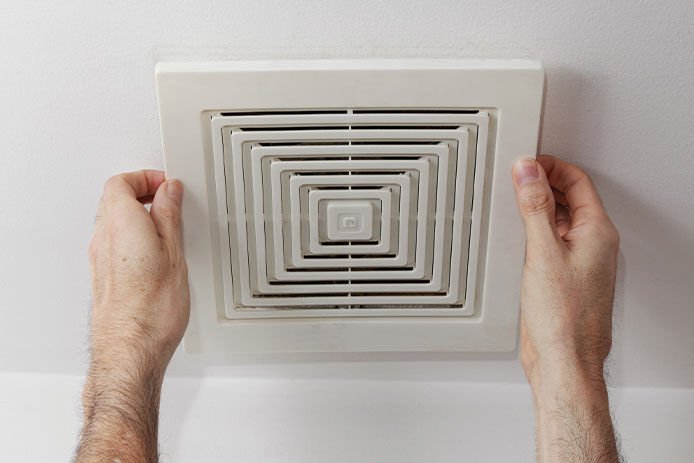Bathroom Exhaust Fan Installation Guide

A properly installed bathroom exhaust fan helps prevent mold, removes moisture, and improves air quality. Whether you’re replacing an old unit or adding a new one, this guide covers what you need to know.
Why You Need a Bathroom Exhaust Fan
Without proper ventilation, bathrooms become breeding grounds for mold and mildew. A bathroom exhaust fan pulls moist air out and helps maintain a dry, odor-free space.
💡 Tip: Exhaust fans are essential in bathrooms without windows.
Bathroom Fan Installation Options
| Type of Installation | Description |
|---|---|
| Replace old bathroom fan | Swapping an outdated or noisy fan |
| Install bathroom exhaust fan | Adding a fan in a bathroom with no vent |
| Bathroom fan with light | Fan/light combo to save ceiling space |
| Bathroom fan with heater | Adds warmth and comfort during colder months |
⚠️ Warning: Not all fans are rated for shower or high-humidity zones. Check the IP rating.
Bathroom Fan Installation Cost
| Task | Average Cost |
|---|---|
| Replace existing fan | $150 – $300 |
| Install new fan with wiring/vent | $300 – $700 |
| Install fan with light or heater | $250 – $600 |
| Labor (electrician or handyman) | $75 – $150/hour |
| Permit (if required) | $25 – $100 |
🧰 Most bathroom fan installations take 2–4 hours depending on attic access and venting.
When You Might Need Bathroom Exhaust Fan Installation (and What It Involves)
✅ Replacing an Old or Noisy Bathroom Fan
- When it’s needed: The existing fan is loud, weak, or no longer working.
- What needs to be done:
- Turn off power to the bathroom at the breaker.
- Remove the old fan cover and motor housing.
- Disconnect wiring and unscrew the fan box.
- Install a new fan of similar size to avoid cutting drywall.
- Connect the wiring, secure the new box, and test.
🔑 replace old bathroom fan
🆕 Installing a Fan Where None Exists
- When it’s needed: In older homes or half-baths with no window or exhaust.
- What needs to be done:
- Choose proper fan size (based on room square footage).
- Cut a hole in the ceiling between joists.
- Run new wiring from the breaker panel (requires attic or crawlspace access).
- Mount a fan-rated box and ductwork to an external vent.
- Connect fan, test, and patch drywall if needed.
🔑 install bathroom exhaust fan
💡 Upgrading to a Bathroom Fan with Light or Heater
- When it’s needed: For multi-function use in small or cold bathrooms.
- What needs to be done:
- Remove old fan and check if your wiring supports added functions.
- If needed, run additional lines for light/heater switch.
- Install a combination fan-light-heater unit with proper support.
- Use a dedicated switch or controller for each feature.
🔑 bathroom fan with light, bathroom fan with heater
🛠️ During Renovation or Remodeling
- When it’s needed: Anytime walls or ceilings are open, it’s a great chance to upgrade ventilation.
- What needs to be done:
- Evaluate existing fan capacity.
- Replace small or outdated units with energy-efficient, quiet models.
- Integrate fan with smart lighting or humidity sensors for convenience.
Steps to Install a Bathroom Exhaust Fan
1. Choose the Right Fan Size (CFM)
- Match fan power to bathroom size (typically 1 CFM per square foot).
2. Check for Existing Venting
- Fans must vent outdoors — never into the attic.
3. Install New Wiring (if needed)
- May require running a dedicated line from the breaker box.
4. Mount the Fan
- Secure to ceiling joists using brackets or mounting box.
5. Connect Ductwork and Wiring
- Use insulated ducting to reduce noise and condensation.
6. Seal, Patch, and Test
- Ensure air is being properly exhausted to the exterior.
FAQs
Q: Can I install a bathroom fan myself?
A: Yes, if you’re experienced with electrical work and have attic access. Otherwise, hire a pro.
Q: How loud should my fan be?
A: Measured in sones — 1.5 or lower is considered quiet.
Q: Do I need a permit to install a bathroom fan?
A: In some areas, yes — especially if new wiring or venting is required.
